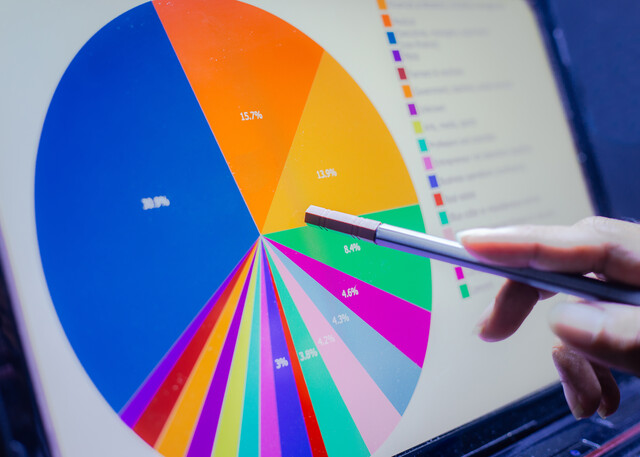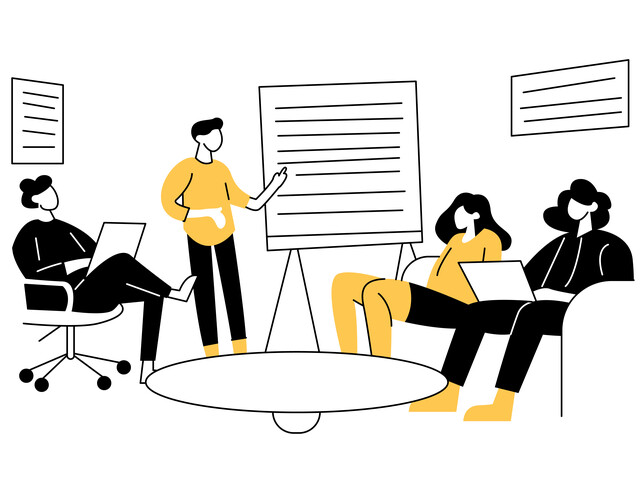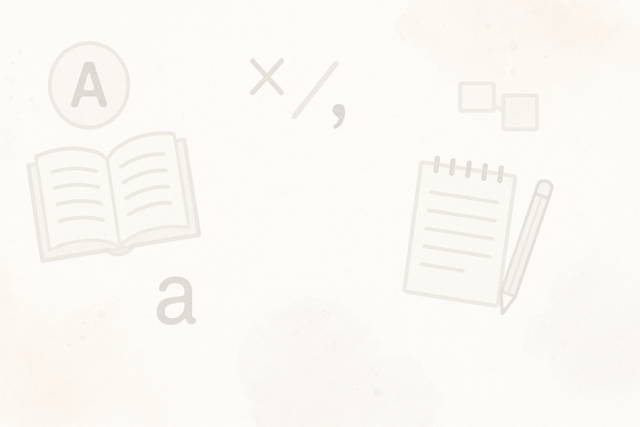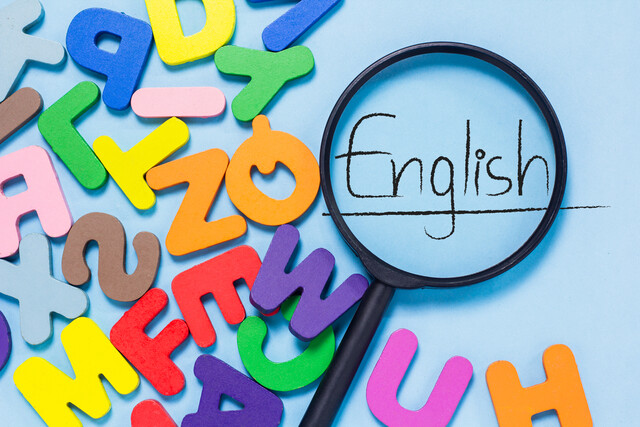Now that you know some of the basic dos and don'ts for writing business e-mails, let's focus on the content of your message. Let's say you have a professional e-mail address, a succinct subject line, and voilà -- your intended recipient has opened your message.
Now what? How do you make sure your e-mail actually gets read and is not closed to view later or, even worse, deleted?
Find the purpose. Many ineffective business e-mails are a result of poor planning – or, in some cases, no planning. Sending a professional e-mail is not the same as dashing off a text to a friend. You need to think about the message before you write it and then organize your thoughts
First, determine the purpose of your e-mail and the intended result. Do you wish to inform the reader (example: You are the board secretary and you are attaching minutes)? Do you wish the reader to take action (example: You are requesting he or she attend a meeting)? Are you asking the reader to help you with something (example: You would like clarification on the new company vacation policy)? The purpose of your message will help you organize your message in a logical order.
Like a good story, an e-mail has three main parts: a beginning, a middle, and an end. After your professional salutation, such as "Dear Ms. Goodwin," if you know the recipient, or "Hello everyone" is you are writing to a group, it is time to begin your brief introduction.
A clear introduction lets the reader know who you are and what the purpose is for your message. Small talk is fine in person, but studies find that you have only about eight seconds to catch the reader's attention in an e-mail. According to Statistic Brain, the average adult attention span is eight seconds. If your reader reads one word per second, that's eight words to grab them.
So you can see that you need to get right to the point or you will lose you reader entirely. Remember you reader has those other 121 messages to get to!
Begin by briefly identifying yourself and then stating your purpose for writing the e-mail. Here is an example:
Dear Ms. Goodwin:
It was a pleasure meeting you today at the district conference. I am writing to follow up on your request for more information about our web design services.
If you are asking the reader a question, or you are asking their help with something, be sure to include any relevant source material to provide context for your message. For example, if you are revising a document and are unsure about how to handle one paragraph, you could cut and paste the paragraph for your reader's reference.
Format your message. Have you ever clicked out of an e-mail because it just looked too time-consuming? Chances are good it was not formatted properly. When we are crunched for time (and who isn't?), we tend to shy away from big blocks of print.
Be kind to your reader by using short paragraphs to separate the different parts of your e-mail. Which would you be more likely to read?
This:
Dear Ms. Goodwin: It was a pleasure meeting you today at the district conference. I am writing to follow up on your request for more information about our web design services. I have taken a look at your company website, and I am confident that our design service will help you get more readers. My partner and I will take the time to get to know you and your business, so we can make the changes that will best suit your clients. We provide the whole package – from words to pictures. Plus, we guarantee results. You mentioned that you had a marketing meeting next week. I would be happy to draw up a proposal for the project and attend the meeting. Please let me know what time would be convenient for you and/or if you have any questions for me beforehand. I look forward to working with you.
With best regards, Jane Sullivan
Or this:
Dear Ms. Goodwin:
It was a pleasure meeting you today at the district conference. I am writing to follow up on your request for more information about our web design services.
I have taken a look at your company website, and I am confident that our design service will help you get more readers. My partner and I will take the time to get to know you and your business, so we can make the changes that will best suit your clients.
We provide the whole package – from words to pictures. Plus, we guarantee results.
You mentioned that you had a marketing meeting next week. I would be happy to draw up a proposal for the project and present it at the meeting. Please let me know what time would be convenient for you and/or if you have any questions for me beforehand.
I look forward to working with you.
With best regards,
Jane Sullivan
As you can see, the breaks for paragraphs offer white space and help the reader digest your information in small chunks. (We'll discuss more about formatting in Chapter 6: Business Letter Templates) If your message contains several key points, you can use bullets or bold face type to emphasize your points. Avoid typing your entire message in bold, however. It can come across as if you are shouting and you will lose any intended emphasis.
The body of your message should be clear and concise. After your brief introduction, the reader now knows who you are and why you are writing. Now it is time to give any supporting details or clarification that will help accomplish your purpose. Refer your reader to links or other sources if they need more information to make a decision. Think short and to-the-point.
Finally, state your desired outcome to complete your message. If you're requesting a response, let the reader know what type of response you require. Would you like to set a meeting? Would you like the reader to send you a reference letter? Would you like a document signed and returned to you? Be specific with your request and include any deadlines. Here are a few examples: "I will call you on Wednesday afternoon after I have arrived in town," or "Please sign and date the document and return it to me by return e-mail at your earliest convenience."
Use a professional tone in your e-mail. As we mentioned in our etiquette rules, maintaining a business-like tone is essential for an effective workplace e-mail.
So much of human communication is nonverbal. Many studies, in fact, say nonverbal factors contribute to 93 percent of what we "say" to others. In his book, Silent Messages, Albert Mehrabian shared his research on the subject. He found that only 7 percent of any message is conveyed through words; 38 percent through certain vocal elements; and 55 percent is conveyed through nonverbal means, such as facial expressions, gestures, eye contact, and posture.
With an e-mail, however, your reader only has your written words. What happens when you take nonverbal communication out of the mix? Your message can be misunderstood or misinterpreted. The tone of your message not only can make the difference between an effective e-mail and an ineffective e-mail, it can have even more serious implications.
The reader may not be able to tell if you are making a joke, or if you are serious in an e-mail. With no support from gestures, vocal inflection or other nonverbal cues, what is intended as lighthearted, may come off as inappropriate or offensive. Be careful with your tone and avoid anything that could be taken the wrong way. If you are unsure, leave that written comment out and save it for a face-to-face conversation.
Here is an example of a brief business e-mail between colleagues that could be misconstrued.
Jim,
I need that marketing report by 5 p.m. today, or I'll miss my deadline.
Lacey
The two people know each other, so an informal e-mail is appropriate, but the tone of this e-mail is so clipped that "Jim" would assume that "Lacey" is angry with him.
Here is a better approach:
Hi Jim,
Thank you for all your time and hard work on the marketing report. Could you please get your revisions over to me by 5 p.m. today? That way, I will have plenty of time to make my deadline.
Thanks so much!
Lacey
Just a few more words can soften the tone of a message. You can pick up on unintended meanings by reading your e-mail aloud to yourself before sending or even e-mailing a draft to yourself to see how it looks on the page.
The tone of your message should reflect your knowledge of your audience. Think about your relationship with the reader to help you set the right tone with your e-mail. Is the reader a co-worker you see and talk with every day? A casual tone may be fine. Is the reader someone you never met, or just met? Is the recipient your supervisor? A more formal tone is needed. For example, avoid informal language, slang, jargon, emoticons, and inappropriate abbreviations.
By now, you have a great beginning, middle, and end. It's time to complete your e-mail with your closing signature. As we mentioned in our etiquette rules, a polite closing is essential to a professional e-mail. You may close your message with words and phrases, such as "Regards," "Yours sincerely," or "All the best," depending on the reader and the business relationship.
If you are on friendly terms already with the reader, you may follow the closing phrase with your first name. If the reader is not someone you know well, use your full name. Below your name, be sure to include your company name, your position, as well as you full contact information. That way, it will be easy for the reader to give you a call or check out your website or social media page for more information.
To P.S. or not to P.S.? A brief postscript can add a warm, personal touch to an e-mail. What you conclude in a P.S. depends on your purpose. Perhaps you want to re-state a special offer or bonus you are offering to the readers. Perhaps you want to offer a compliment to the reader about their latest presentation. Consider adding a P.S. as a way to underscore your message's call to action.
Proofreading is essential. The most important step in creating any e-mail is the proofreading step. Re-read all your messages carefully before you send them.
If your e-mail program supports it, use spelling and grammar checkers. These are only a good start in the proofreading process, however, since your "checkers" will not catch all mistakes. If you have transposed the letters in a word, or mis-typed a word, but have still created a word, it will not be highlighted, for example. Once again, slowly read your message aloud to help you catch any spelling or grammar mistakes or awkward phrasing that you might read over otherwise.
As you proofread, consider the length of your e-mail. Is there any information that is unnecessary or redundant? Your reader is more likely to read and act upon a concise message.
There is no ideal length to shoot for, as the purpose for every e-mail is different. As you proofread, look to cut out the fluff, just as you would with any piece of writing.
Before hitting the send button, here is your effective e-mail checklist:
-
Do you have a strong, concise subject line?
-
Have you double-checked your recipient's address?
-
Do you have a professional salutation?
-
Does your introduction identify who you are, and why you are writing?
-
Does the body of the message contain clear supporting information?
-
Is your message formatted well, with short, easy-to-read paragraphs?
-
Do you have a clear call to action?
-
Have you signed off politely?
-
Have you included other contact information?
-
Have you proofread your message carefully?
It is important to realize that your e-mails are a reflection of you and your professionalism. In a world of instant communication and knee-jerk reactions, you can set yourself apart from the rest by composing and delivering well-written clear messages that demonstrate you are someone with whom people want to do business.



























